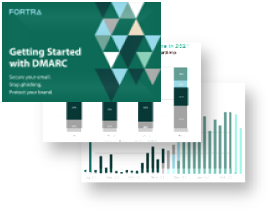The reality of email is that cybercriminals can use almost any brand or email domain to send spam, phishing emails, and malware installs, inflicting direct losses to customers and eroding the brand equity companies have spent years building up. The solution is DMARC, which allows companies to understand all the different mail streams being sent under their name, and prevent the malicious ones from getting to consumer inboxes.
Read “Getting Started with DMARC” now for:
- An overview of what DMARC does and how it works
- A closer look at security standards including SPF, DKIM, and DMARC
- DMARC implementation steps, best practices, and common challenges
- Real-world data on phishing attacks before and after DMARC adoption
